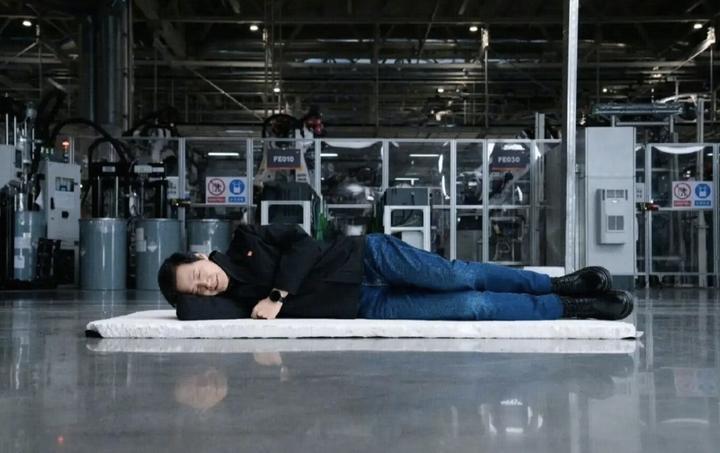Xiaomi's PR Success: Lei Jun's Workshop Nap Photo
When Lei Jun posted a photo of himself napping in Xiaomi’s car factory, he later admitted it was staged for entertainment. The seemingly casual photo turned into a masterful PR campaign highlighting Xiaomi’s 100,000th car milestone.

The recent viral photo of Lei Jun, Xiaomi’s CEO, napping in the company’s car factory workshop has sparked widespread discussion across China’s social media. While Lei Jun later acknowledged the photo was staged “just for fun,” this incident offers fascinating insights into modern corporate communications and marketing strategies.
This carefully orchestrated moment coincided with a significant milestone - Xiaomi’s 100,000th car rolling off the production line. The timing was no coincidence. By choosing this particular method of announcement, Xiaomi demonstrated sophisticated understanding of social media dynamics and public engagement.
The staged photo showed Lei Jun lying on the factory floor with a slight smile - a detail that many observers noted seemed unnatural for someone genuinely sleeping. This intentional imperfection actually worked in the campaign’s favor, generating additional waves of discussion as people debated its authenticity.
Some drew parallels to Elon Musk’s famous factory floor sleeping incidents at Tesla during production ramp-up. However, where Musk’s situation emerged from genuine production crises, Lei Jun’s photo was explicitly designed as a marketing tool - and perhaps more importantly, he was transparent about this fact when questioned.
The photo achieved multiple objectives:
- Generated massive social media engagement
- Drew attention to Xiaomi’s production milestone
- Humanized the brand through its CEO
- Created multiple waves of viral content
- Demonstrated the company’s marketing prowess
The success of this campaign highlighted Lei Jun’s exceptional understanding of social media dynamics. In China’s internet marketing landscape, Lei Jun and Xiaomi have consistently demonstrated an ability to generate organic viral moments that feel authentic while serving clear strategic purposes.
This incident also reveals the evolution of corporate communications in the age of social media. Rather than traditional press releases or formal announcements, companies increasingly opt for seemingly casual, relatable moments that resonate with online audiences while delivering key business messages.
For Xiaomi, reaching the 100,000-car milestone in just 230 days was a significant achievement worthy of attention. By packaging this news in an engaging social media moment, the company ensured the message reached a broader audience while generating positive brand associations.
The transparency about the staged nature of the photo, rather than diminishing its impact, added another layer of engagement as audiences appreciated being “in on the joke.” This approach reflects a sophisticated understanding of modern media consumption, where audiences often value authenticity in intent over authenticity in execution.